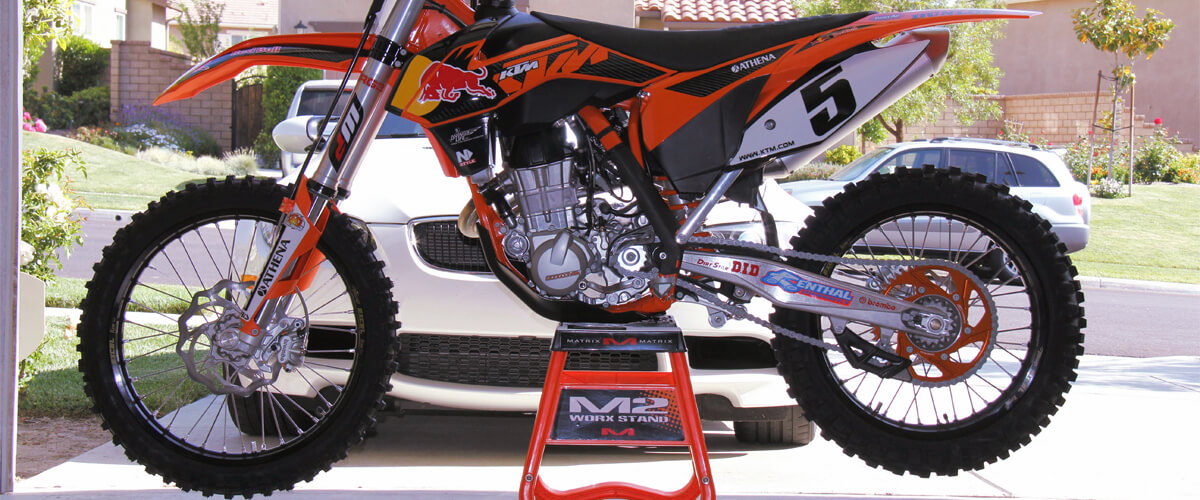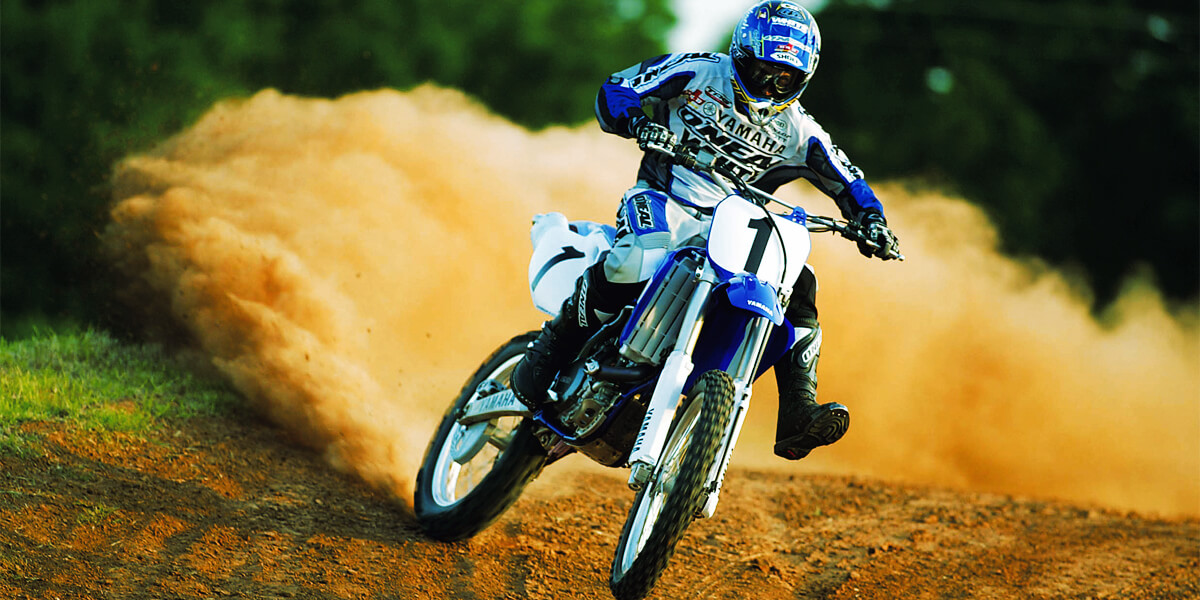Have you ever found yourself with the shiny, brand-new dirt bike of your dreams and wondered, “How do I break in this mechanical beast?” Well, I’ve been there, and let me tell you, understanding how to break in a new dirt bike is all part of the biking journey. Have no clue how to do it, right? Read on as I will delve into the do’s and don’ts of this important process.
Understanding the break-in process

The break-in process, in essence, is a gentle introduction for your bike to the rigors of off-road riding. It’s split into three stages, and each is a gradual increase in the intensity of your bike’s performance.
- Initial break-in. Here, you want to keep things nice and easy, avoiding sudden accelerations or high RPMs. Keep your dirt bike’s throttle under 1/4 of its total capacity. This lets the engine parts gently settle in and helps the piston rings to seat properly. Remember to vary the engine speed and avoid prolonged idling.
- Mid-range operation. In this stage, you gradually increase the speed, allowing the bike to get a feel for those middle gears. Gradually increase the throttle to about 1/2 of its total capacity. Continue to vary the engine speed and start introducing some short bursts of acceleration, followed by deceleration. This helps to further set the piston rings.
- Full throttle operation. That’s when your beast spreads its wings and flies. At this point, you can push your dirt bike’s throttle to about 3/4 of its total capacity. Continue to vary your engine speed and introduce some full-throttle accelerations, followed by engine braking. This final stage ensures that all parts are fully broken in and ready for optimum performance.
But I want to point out that your bike’s manufacturer will have specific instructions for this break-in procedure. Ignoring these recommendations is like ignoring your doctor’s advice—it might lead to some serious problems down the line, like premature engine wear.
Also, don’t expect to breeze through this process in one long ride. It’s more of a marathon than a sprint, often taking several shorter rides over days or even weeks. And remember, keep a close eye on the oil level and temperature during this period. Overheating is the enemy here, and we certainly don’t want that, do we?
Preparing for the break-in process
So, you’ve just made that exciting leap of buying a new dirt bike and are ready to take on the trails. But before you jump headfirst, you need to ensure you’re prepared. Consider this pre-flight checklist!
First things first, dig out that user manual that came with your bike. It might not be the most exciting read, but trust me, it’s full of useful information. For example, it’ll provide manufacturer-specific recommendations for the break-in procedure that you’d do well to follow or give an idea of the break-in period for a new dirt bike. Of course, you don’t want to unintentionally void your warranty or cause damage to your new ride, do you?
Next up, give your dirt bike a thorough once-over. Inspect it for any defects or issues that might have slipped through the cracks. Check the tires, brakes, chain, and all the other components to make sure everything’s shipshape. Remember, we aim for a smooth break-in, and any hidden issues could throw a spanner in the works.
And finally, gather all the necessary tools and equipment. This might include a set of basic tools, quality oil, a filter for the first oil change, and maybe even a ride-on thermometer to monitor that engine temperature.
Common mistakes to avoid

Now that we’ve covered the basics, let’s address some of the common pitfalls in breaking in the engine of your shiny new dirt bike. A misstep here could end up costing you in the long run, so let’s ensure you know what to avoid.
One of the most common mistakes I’ve seen is folks getting too excited and going full throttle right off the bat. Remember, your bike’s engine is like a newborn, and it needs time to adjust before it can handle high speeds and high RPMs. Ignoring this can lead to premature engine wear and a significantly shorter lifespan for your bike.
Another blunder to dodge is neglecting the manufacturer’s specific instructions. These aren’t suggestions, folks; they’re guidelines that have been developed through rigorous testing to ensure the optimal performance of your bike. Ignoring them could lead to engine damage and might even void your warranty.
And finally, don’t forget to check your bike regularly throughout the break-in period. Missing changes in oil level or engine temperature is like overlooking warning signs on a dangerous road – not a good idea!
So how can we avoid these mistakes? Start by practicing patience. Your bike will thank you in the long run. Stick to the manufacturer’s guidelines like they’re your bike’s bible, and keep a close eye on your bike’s vitals.
Remember, breaking in the engine isn’t a chore; it’s an investment in your bike’s future performance and longevity. So take the time, do it right, and you’ll be rewarded with a dirt bike that’s ready to tackle anything you throw at it.
FAQ
How long does the break-in process typically take?
There’s no one-size-fits-all answer to this. It can vary depending on the make and model of your bike and how often you ride. Generally speaking, you might expect the break-in period to last for the first 500 to 1000 miles or around 15 to 30 hours of engine run time. However, always refer to your user manual for the most accurate information.
Can I normally ride my new dirt bike during the break-in period?
Absolutely! In fact, riding your beast is an integral part of the dirt bike break-in process. However, remember that you shouldn’t push your bike too hard during this period. It’s all about gentle, gradual riding, gradually increasing your speed and RPMs over time.
How can I tell if my new dirt bike is ready for the next stage of the break-in process?
This is where your keen observation skills come into play. Listen to your bike. Is it running smoothly? Does it respond well when you increase the throttle? Are the oil levels and engine temperature stable? If the answer is yes, then you’re probably ready to move on to the next stage. But when in doubt, consult your user manual or a professional.






